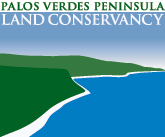Lands & Trails
Restoring The Land
Restored Lands
Since it was founded in 1988, the Palos Verdes Peninsula Land Conservancy has preserved more than 1,600 acres of open spaces on the Peninsula that are home to rare plants and wildlife. The Conservancy works to restore native coastal sage scrub, grassland, cactus scrub and riparian habitat to return damaged lands to a healthier condition. Urbanization, agriculture, wildfires and introduction of non-native plants (weeds) all have contributed to species loss and endangerment.
Restored habitats provide food, shelter and nesting areas for native species that survive only under certain conditions. Conservancy habitat restoration projects have assisted in the recovery of four at-risk species: the El Segundo blue butterfly, the Palos Verdes blue butterfly, the Coastal California gnatcatcher, and the cactus wren. The Conservancy operates a native plant nursery that propagates more than 60 different species for restoration projects, and annually plants nearly 23,000 seedlings in the Nature Preserve lands with the help of more than 1,700 volunteers along with a professional stewardship staff.
A SUCCESS STORY
The Palos Verdes Blue Butterfly
In the early 1980s, the Palos Verdes blue butterfly (Glaucopsyche lygdamus palosverdesensis) was thought to be extinct until a sighting by a team of researchers at the Defense Fuel Support Point in San Pedro in 1994. This rediscovery spearheaded a multi-organizational effort to bring the PV blue butterfly from the brink of extinction to full recovery.
As part of a multi-organizational partnership, the Conservancy grows the food plants, restores and maintains the habitat essential to the reintroduction of the species. According to biologist Dr. Jana Johnson, who heads the Butterfly Project at Moorpark College, “The Conservancy’s work to restore this native habitat has been key to the recovery of the PV blue butterfly.”
Over the past several years, thousands of PV blue butterflies have been released into the wild. In addition to cultivating plants and creating habitat necessary for their survival, Conservancy staff and volunteers monitor the species’ host plant establishment as part of recovery efforts.
